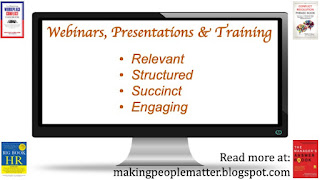We’re in unusual times. Work has been disrupted. People are working from home and managers are concerned about productivity. Even though studies show that employees are more productive when they work offsite, current circumstances are highly unusual. There are some many additional distractions – partners, pets and children. Nevertheless, managers can’t overlook performance issues even when times are tough.
Most of us have never worked in this kind of circumstances before, and we may think there isn’t a playbook on what to do. Actually, there is. Follow your organization’s guidance and policies on performance management. But in times of crises, tread lightly. Here are some thoughts,
- Empathy. Whatever the issue is, this is the time to be empathetic. That’s not to say you let serious issues slide because we’re in a time of crisis, but go a little slower and gentler than usual before you take any management action.
- Communicate. As in any issue, you’ll want to talk to the employee. This is complicated if you and the employee are not physically in the same place, but you can use Zoom or Skype or other platform your organization uses to communicate virtually.
- Get the facts. Ask open ended questions and listen carefully to responses. Your intent is to get the employee’s perspective. The key here is to keep an open mind. You may think you understand the issue or situation, but you may not have all the facts.
- Clarify. Clear up any misunderstandings about your expectations. Clarity on expectations is extremely important to a successful working relationship.
Yes, even during a pandemic, employees behave badly at work—even if they’re working from their own home. Relaxed environments and atmospheres break down boundaries. There have been concerns about on-line harassment and cyberbullying. At the same time, everyone’s stress level is high. Remind employees that your conduct policies still apply even in a drastically changed workplace, and follow your disciplinary processes if you decide action is required.
The Manager’s Answer Book provides a roadmap for coaching and counseling employees. See page 59 to 61 for actions you can take to help an employee get back on track—even during a pandemic. In this time of crisis, we suggest you grant a bit more grace than usual; but no matter the employee issue, deal with it in a timely and professional manner.




